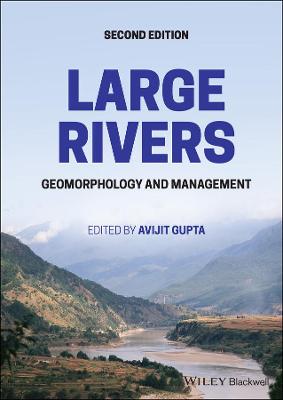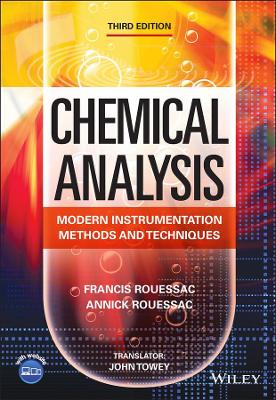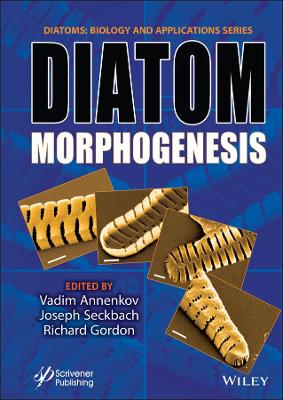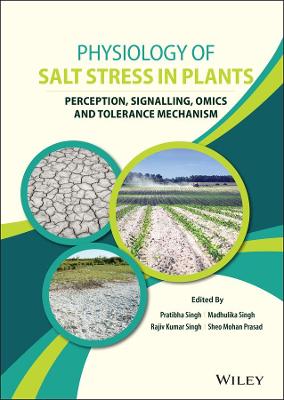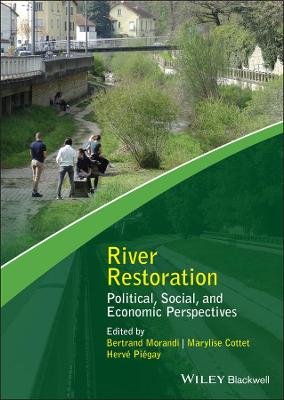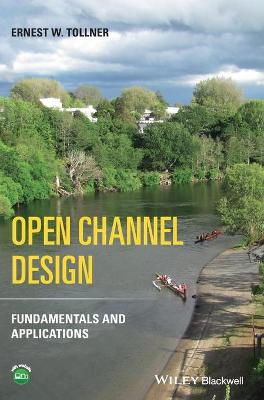Nano-Technological Intervention in Agricultural Productivity
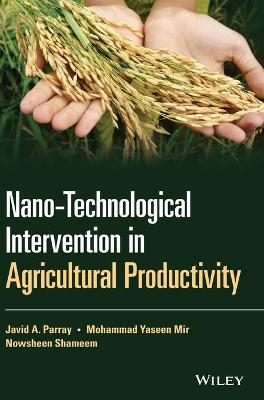 -15%
portes grátis
-15%
portes grátis
Nano-Technological Intervention in Agricultural Productivity
Yaseen Mir, Mohammad; Shameem, Nowsheen; Parray, Javid A.
John Wiley & Sons Inc
08/2021
208
Dura
Inglês
9781119714859
15 a 20 dias
544
About the Book xiii
1 Nanotechnology and Nanoparticles 1
1.1 Nanoparticles and Their Functions 1
1.2 Classification of NPs 2
1.2.1 Carbon-Based NPs 2
1.2.2 Metal Nanoparticles 2
1.2.3 Ceramic NPs 3
1.2.4 Semiconductor NPs 3
1.2.5 Polymeric NPs 3
1.2.6 NPs Based on Lipids 4
1.3 Synthesis of Nanoparticles 4
1.3.1 Top-Down Synthesis 4
1.3.2 Bottom-Up Synthesis 5
1.4 NPs and Characterization 6
1.4.1 Morphological Characterization 6
1.4.1.1 SEM Technique 6
1.4.1.2 TEM Technique 6
1.4.2 Structural Characteristics 7
1.4.2.1 XRD 7
1.4.2.2 Energy-Dispersive X-ray (EDX) 7
1.4.2.3 XPS 7
1.4.2.4 FT-IR and Raman Spectroscopies 8
1.4.3 Particle Size and Surface Area Characterization 8
1.4.4 Optical Characterizations 8
1.5 Physicochemical Properties of NPs 9
1.5.1 Mechanical and Optical Properties 9
1.5.2 Magnetic Properties 9
1.5.3 Mechanical Properties 10
1.5.4 Thermal Properties 10
1.6 Functions of NPs 10
1.6.1 Drugs and Medications 11
1.6.2 Materials and Manufacturing 11
1.6.3 Environment 12
1.6.4 Electronics 12
1.6.5 Energy Harvesting 12
References 13
2 Implications of Nanotechnology and Environment 21
2.1 Ecotoxicological Implications of Nanoparticles 21
2.1.1 Ecotoxicity of Fullerenes 23
2.1.2 Ecotoxicity of Carbon Nanotubes 23
2.1.3 Ecotoxicity of Metal Nanoparticles 23
2.1.4 Ecotoxicity of Nanocomposites 24
2.1.5 Ecotoxicity of Oxide Nanoparticles 25
2.2 Nanotechnology and Agriculture 26
2.3 Risk Assessment Factors and Modulation of Nanomaterials 27
References 30
3 Nanotechnology and Disease Management 37
3.1 Recent Advancements in Plant Nanotechnology 37
3.1.1 Cerium Oxide (CeO2) NPs 38
3.1.2 Silver NPs 38
3.1.3 Titanium Dioxide (ToO2) NPs 39
3.1.4 Zinc Oxide (ZnO) NPs 41
3.1.5 Cupric Oxide (CuO) NPs 41
3.1.6 Gold NPs (GNPs) 42
3.1.7 Carbon Nanotubes 42
3.1.8 Nickel Oxide NPs 43
3.2 Nanotechnology: Role in Plant-Parasitic Control 43
3.2.1 Nanocapsules: Liposomes and Polymers 44
3.2.1.1 Potential Uses in Controlling ParasiticWeeds 44
3.3 Abiotic Stress-Tolerant Transgenic Crops and Nanotechnology 45
3.3.1 Nanotechnology in Gene Transfer Experiments 45
3.4 Plant Pathogens and Nanoparticle Biosynthesis 46
3.4.1 Bacteria-Mediated Biosynthesis 47
3.4.2 Fungal Mediated Biosynthesis 48
3.5 Nanomaterial and Plant Protection Against Pests and Pathogens 49
3.6 Future Perspectives 51
References 51
4 Nanotechnology in Agri-Food Production 59
4.1 Nanomaterials 59
4.2 Nanotechnology and Food Systems: Food Packing 60
4.3 Nano-Nutraceuticals 61
4.3.1 Issues with Nano-Nutraceuticals 62
4.4 Nanotechnological Advancement in Antimicrobial Peptides (AMPs) 63
4.4.1 Passive Nano-Delivery Systems 63
4.4.1.1 Cyclosporin A 63
4.4.1.2 Nisin 64
4.4.1.3 Polymyxin 64
4.4.2 Antimicrobial Peptides in Targeted Nano-Delivery Systems 64
4.5 Assessment of Nanotechnology for Enhanced Food Security 65
4.5.1 Framework for Assessing the Potential Role of Nanotechnology in Food 65
4.5.2 Assessment of Nanotechnology Potential Through Literature Survey 65
4.6 Future Perspectives 66
References 66
5 Nanotechnology: Improvement in Agricultural Productivity 73
5.1 Nanoparticle Biosynthesis and Use in Agriculture 73
5.1.1 Silver Nanoparticles 73
5.1.2 Zinc Oxide Nanoparticles 74
5.1.3 Titanium Dioxide (TiO2) Nanoparticles 75
5.2 Nanorobots 76
5.2.1 Environment Monitoring 77
5.2.2 Nanorobot Sensors 79
5.2.3 Pollutant and Chemical Detection 79
5.2.4 Metal Identification 80
5.2.5 Nanorobot Data Transmission 81
5.2.6 Nanorobot System on Nanotechnology Chip 82
5.3 Natural Nanostructures in Food 82
5.3.1 Protein-Based Nanostructures 83
5.3.1.1 ?-Lactoglobulin 84
5.3.1.2 Serum Albumin 85
5.3.1.3 ?-Lactalbumin and Lysozyme (Lys) 85
5.3.1.4 Ovalbumin and Avidin 86
5.3.1.5 Transferrins 86
5.3.1.6 Osteopontin and Osteopontin Lactoperoxidase (OPN) 87
5.3.2 Formation of Natural Nanostructure Subsequently to Molecular
Interaction/Complexation 88
5.3.2.1 Lipid-Based Nanostructures 89
References 90
6 Lignin Nanoparticles: Synthesis and Application 97
6.1 Overview of Lignin Nanoparticles 97
6.2 Lignin Nanoparticle Synthesis (LNPs) 98
6.2.1 Polymerization 98
6.2.2 Acid Precipitation 98
6.2.3 Solvent Exchange Method 99
6.2.4 Ultrasonication 100
6.2.5 Biological Method 100
6.3 Application of Lignin Nanoparticles (LNPs) 101
6.3.1 Antibacterial Activity 101
6.3.2 Antioxidant Activity 102
6.3.3 UV Absorbents 102
6.3.4 Hybrid Nanocomposites 103
6.3.5 Drug Delivery System 103
6.3.6 Adsorbents to Remove Dyes 104
6.3.7 As a Capacitor 104
6.3.8 As a Nano-trap 105
References 105
7 Contemporary Application of Nanotechnology in Agriculture 109
7.1 Introduction 109
7.2 Nanofertilizers 110
7.3 Nanocomposites 111
7.4 Nanobiosensors 112
7.4.1 Nanosensors in Agriculture 113
7.4.2 Monitoring Soil Conditions and Plant Growth Regulators 113
7.4.3 Plant Pathogen Recognition 114
7.4.4 Detection of Pesticide Residues 114
7.5 Nanopesticides 115
7.6 Natural Nanoparticles: Environmental and Health Implications 118
7.6.1 Water Quality 118
7.6.2 Interactions with Contaminants and Other Organisms 119
7.6.3 Environmental Risks and Biogeochemistry of NNPs 120
7.6.4 Environmental Issues 120
7.7 Future Perspective 121
References 121
8 Nanotechnology: Advances in Plant and Microbial Science 131
8.1 Engineered Nanomaterials and Soil Remediation 131
8.1.1 ENMs: Role in Soil Remediation 132
8.1.1.1 Immobilization 132
8.1.1.2 Photocatalytic Degradation 134
8.2 Fate and Interactions of Nanomaterials in Soil 135
8.2.1 Nanoparticles and Plants 136
8.2.2 Suppressive Effects on Plants 136
8.2.3 Promontory Plant Effects 136
8.2.4 Nanoparticles and Impacts on Soil Microbes 138
8.2.5 Zinc and Sulfur Nanoparticles 138
8.2.6 Copper and Silica Nanoparticles 139
8.3 Nanomaterials and Metal Components: Accumulation and Translocation
Within Plants 139
8.3.1 NPS: Uptake and Translocation in Plants 140
8.3.2 NPS: Root Uptake and Translocation 141
8.3.3 Assimilated Root Uptake and Translocation Pathways of Nanoparticles 142
8.3.4 NPS: Transformation in the Rhizosphere 144
8.4 Biotransformation of ENPs in Plants 145
8.5 Effect of Nanomaterials on Plants 146
8.5.1 Positive Effects 146
8.5.2 Toxicity 147
References 148
9 Food Application and Processing: Nanotechniques and Bioactive
Delivery Systems 161
9.1 Introduction 161
9.2 Phytochemicals and Nanoparticles 164
9.3 Bioactive Delivery Systems 167
9.3.1 Nanotechnology of Natural Products and Drug Delivery 169
9.4 Bioactive Delivery Systems 173
9.4.1 Protein-Based Nanoscale Delivery Systems 173
9.4.2 Polysaccharide-Based Nanoscale Delivery Systems 175
9.4.3 Complex or Hybrid Nanoscale Delivery Systems 177
9.5 Toxicity of Biodegradable Nanoparticles 180
9.6 Future Perspectives 181
References 182
Index 197
About the Book xiii
1 Nanotechnology and Nanoparticles 1
1.1 Nanoparticles and Their Functions 1
1.2 Classification of NPs 2
1.2.1 Carbon-Based NPs 2
1.2.2 Metal Nanoparticles 2
1.2.3 Ceramic NPs 3
1.2.4 Semiconductor NPs 3
1.2.5 Polymeric NPs 3
1.2.6 NPs Based on Lipids 4
1.3 Synthesis of Nanoparticles 4
1.3.1 Top-Down Synthesis 4
1.3.2 Bottom-Up Synthesis 5
1.4 NPs and Characterization 6
1.4.1 Morphological Characterization 6
1.4.1.1 SEM Technique 6
1.4.1.2 TEM Technique 6
1.4.2 Structural Characteristics 7
1.4.2.1 XRD 7
1.4.2.2 Energy-Dispersive X-ray (EDX) 7
1.4.2.3 XPS 7
1.4.2.4 FT-IR and Raman Spectroscopies 8
1.4.3 Particle Size and Surface Area Characterization 8
1.4.4 Optical Characterizations 8
1.5 Physicochemical Properties of NPs 9
1.5.1 Mechanical and Optical Properties 9
1.5.2 Magnetic Properties 9
1.5.3 Mechanical Properties 10
1.5.4 Thermal Properties 10
1.6 Functions of NPs 10
1.6.1 Drugs and Medications 11
1.6.2 Materials and Manufacturing 11
1.6.3 Environment 12
1.6.4 Electronics 12
1.6.5 Energy Harvesting 12
References 13
2 Implications of Nanotechnology and Environment 21
2.1 Ecotoxicological Implications of Nanoparticles 21
2.1.1 Ecotoxicity of Fullerenes 23
2.1.2 Ecotoxicity of Carbon Nanotubes 23
2.1.3 Ecotoxicity of Metal Nanoparticles 23
2.1.4 Ecotoxicity of Nanocomposites 24
2.1.5 Ecotoxicity of Oxide Nanoparticles 25
2.2 Nanotechnology and Agriculture 26
2.3 Risk Assessment Factors and Modulation of Nanomaterials 27
References 30
3 Nanotechnology and Disease Management 37
3.1 Recent Advancements in Plant Nanotechnology 37
3.1.1 Cerium Oxide (CeO2) NPs 38
3.1.2 Silver NPs 38
3.1.3 Titanium Dioxide (ToO2) NPs 39
3.1.4 Zinc Oxide (ZnO) NPs 41
3.1.5 Cupric Oxide (CuO) NPs 41
3.1.6 Gold NPs (GNPs) 42
3.1.7 Carbon Nanotubes 42
3.1.8 Nickel Oxide NPs 43
3.2 Nanotechnology: Role in Plant-Parasitic Control 43
3.2.1 Nanocapsules: Liposomes and Polymers 44
3.2.1.1 Potential Uses in Controlling ParasiticWeeds 44
3.3 Abiotic Stress-Tolerant Transgenic Crops and Nanotechnology 45
3.3.1 Nanotechnology in Gene Transfer Experiments 45
3.4 Plant Pathogens and Nanoparticle Biosynthesis 46
3.4.1 Bacteria-Mediated Biosynthesis 47
3.4.2 Fungal Mediated Biosynthesis 48
3.5 Nanomaterial and Plant Protection Against Pests and Pathogens 49
3.6 Future Perspectives 51
References 51
4 Nanotechnology in Agri-Food Production 59
4.1 Nanomaterials 59
4.2 Nanotechnology and Food Systems: Food Packing 60
4.3 Nano-Nutraceuticals 61
4.3.1 Issues with Nano-Nutraceuticals 62
4.4 Nanotechnological Advancement in Antimicrobial Peptides (AMPs) 63
4.4.1 Passive Nano-Delivery Systems 63
4.4.1.1 Cyclosporin A 63
4.4.1.2 Nisin 64
4.4.1.3 Polymyxin 64
4.4.2 Antimicrobial Peptides in Targeted Nano-Delivery Systems 64
4.5 Assessment of Nanotechnology for Enhanced Food Security 65
4.5.1 Framework for Assessing the Potential Role of Nanotechnology in Food 65
4.5.2 Assessment of Nanotechnology Potential Through Literature Survey 65
4.6 Future Perspectives 66
References 66
5 Nanotechnology: Improvement in Agricultural Productivity 73
5.1 Nanoparticle Biosynthesis and Use in Agriculture 73
5.1.1 Silver Nanoparticles 73
5.1.2 Zinc Oxide Nanoparticles 74
5.1.3 Titanium Dioxide (TiO2) Nanoparticles 75
5.2 Nanorobots 76
5.2.1 Environment Monitoring 77
5.2.2 Nanorobot Sensors 79
5.2.3 Pollutant and Chemical Detection 79
5.2.4 Metal Identification 80
5.2.5 Nanorobot Data Transmission 81
5.2.6 Nanorobot System on Nanotechnology Chip 82
5.3 Natural Nanostructures in Food 82
5.3.1 Protein-Based Nanostructures 83
5.3.1.1 ?-Lactoglobulin 84
5.3.1.2 Serum Albumin 85
5.3.1.3 ?-Lactalbumin and Lysozyme (Lys) 85
5.3.1.4 Ovalbumin and Avidin 86
5.3.1.5 Transferrins 86
5.3.1.6 Osteopontin and Osteopontin Lactoperoxidase (OPN) 87
5.3.2 Formation of Natural Nanostructure Subsequently to Molecular
Interaction/Complexation 88
5.3.2.1 Lipid-Based Nanostructures 89
References 90
6 Lignin Nanoparticles: Synthesis and Application 97
6.1 Overview of Lignin Nanoparticles 97
6.2 Lignin Nanoparticle Synthesis (LNPs) 98
6.2.1 Polymerization 98
6.2.2 Acid Precipitation 98
6.2.3 Solvent Exchange Method 99
6.2.4 Ultrasonication 100
6.2.5 Biological Method 100
6.3 Application of Lignin Nanoparticles (LNPs) 101
6.3.1 Antibacterial Activity 101
6.3.2 Antioxidant Activity 102
6.3.3 UV Absorbents 102
6.3.4 Hybrid Nanocomposites 103
6.3.5 Drug Delivery System 103
6.3.6 Adsorbents to Remove Dyes 104
6.3.7 As a Capacitor 104
6.3.8 As a Nano-trap 105
References 105
7 Contemporary Application of Nanotechnology in Agriculture 109
7.1 Introduction 109
7.2 Nanofertilizers 110
7.3 Nanocomposites 111
7.4 Nanobiosensors 112
7.4.1 Nanosensors in Agriculture 113
7.4.2 Monitoring Soil Conditions and Plant Growth Regulators 113
7.4.3 Plant Pathogen Recognition 114
7.4.4 Detection of Pesticide Residues 114
7.5 Nanopesticides 115
7.6 Natural Nanoparticles: Environmental and Health Implications 118
7.6.1 Water Quality 118
7.6.2 Interactions with Contaminants and Other Organisms 119
7.6.3 Environmental Risks and Biogeochemistry of NNPs 120
7.6.4 Environmental Issues 120
7.7 Future Perspective 121
References 121
8 Nanotechnology: Advances in Plant and Microbial Science 131
8.1 Engineered Nanomaterials and Soil Remediation 131
8.1.1 ENMs: Role in Soil Remediation 132
8.1.1.1 Immobilization 132
8.1.1.2 Photocatalytic Degradation 134
8.2 Fate and Interactions of Nanomaterials in Soil 135
8.2.1 Nanoparticles and Plants 136
8.2.2 Suppressive Effects on Plants 136
8.2.3 Promontory Plant Effects 136
8.2.4 Nanoparticles and Impacts on Soil Microbes 138
8.2.5 Zinc and Sulfur Nanoparticles 138
8.2.6 Copper and Silica Nanoparticles 139
8.3 Nanomaterials and Metal Components: Accumulation and Translocation
Within Plants 139
8.3.1 NPS: Uptake and Translocation in Plants 140
8.3.2 NPS: Root Uptake and Translocation 141
8.3.3 Assimilated Root Uptake and Translocation Pathways of Nanoparticles 142
8.3.4 NPS: Transformation in the Rhizosphere 144
8.4 Biotransformation of ENPs in Plants 145
8.5 Effect of Nanomaterials on Plants 146
8.5.1 Positive Effects 146
8.5.2 Toxicity 147
References 148
9 Food Application and Processing: Nanotechniques and Bioactive
Delivery Systems 161
9.1 Introduction 161
9.2 Phytochemicals and Nanoparticles 164
9.3 Bioactive Delivery Systems 167
9.3.1 Nanotechnology of Natural Products and Drug Delivery 169
9.4 Bioactive Delivery Systems 173
9.4.1 Protein-Based Nanoscale Delivery Systems 173
9.4.2 Polysaccharide-Based Nanoscale Delivery Systems 175
9.4.3 Complex or Hybrid Nanoscale Delivery Systems 177
9.5 Toxicity of Biodegradable Nanoparticles 180
9.6 Future Perspectives 181
References 182
Index 197






